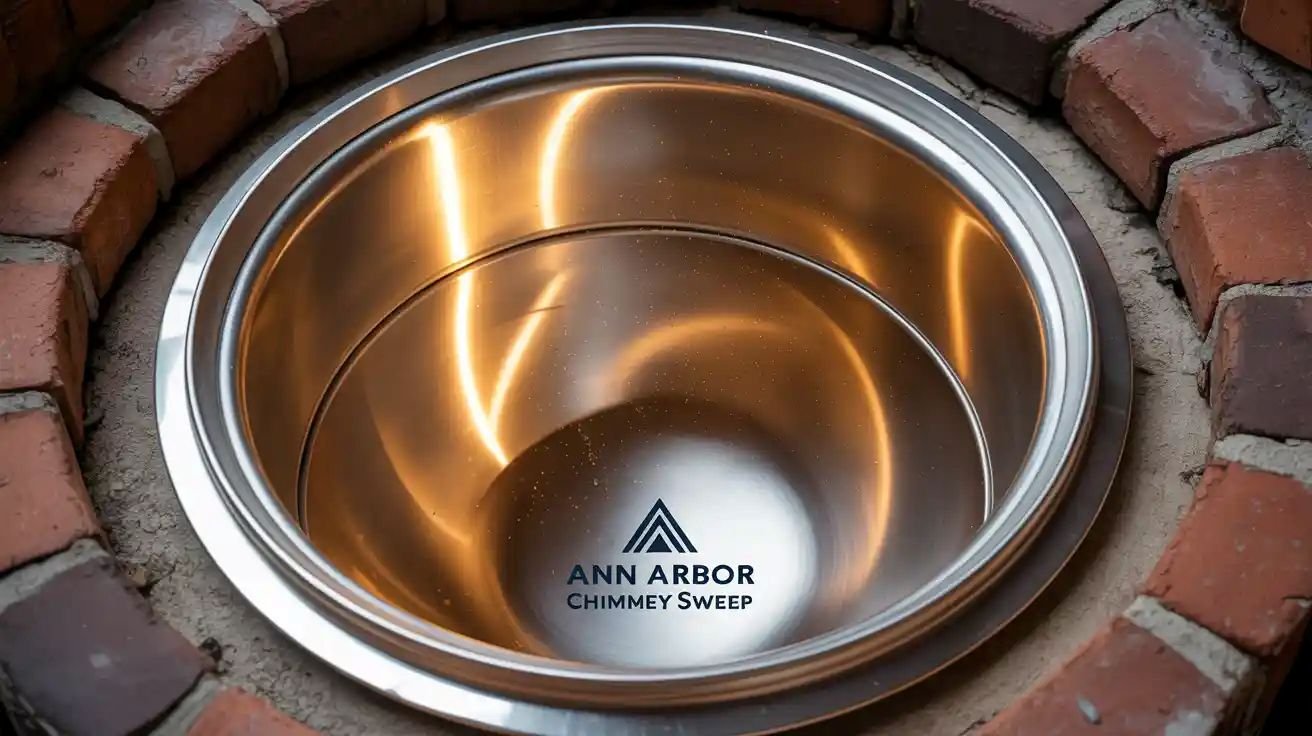If you’ve ever cozied up next to a fireplace in Ann Arbor, you’ve probably never given much thought to what’s hidden inside your chimney. But believe it or not, the material lining that chimney plays a huge role in keeping your home safe and your fires burning smoothly. Whether your house is old and full of character or brand new, the right chimney liner can make all the difference. In this blog, I’ll walk you through the different types of chimney liner materials folks in Ann Arbor usually see, share a bit about how they work, and offer tips from my experience at Ann Arbor Chimney Sweep. By the end, you’ll have a solid understanding of why choosing the best Chimney Liner matters for your home’s safety and coziness.
“A good chimney liner is like a silent guardian—protecting your home while you enjoy the warmth of your fireplace, season after season.”
Brick to Steel: The Main Players in Chimney Liners
When it comes to chimney liners, not all materials are created equal. I’ve seen a variety of options in homes across Ann Arbor, but three types stand out as the most popular: clay tiles, metal liners (especially stainless steel), and cast-in-place liners. Each has its own strengths, quirks, and best uses. Let’s break down what makes each one unique, so you’ll know what’s inside your chimney—or what you might want if it’s time for an upgrade.
| Material | Key Features | Safety | Cost | Emergency Service |
|---|---|---|---|---|
| Clay Tile | Classic, long-lasting, good for open fireplaces | Reliable, but cracks with age or movement | Budget-friendly | Harder to repair quickly in emergencies |
| Stainless Steel | Modern, flexible, fits most chimneys | Excellent against high heat and moisture | Mid to high range | Quick to install or replace in a pinch |
| Cast-in-Place | Custom fit, boosts old chimney strength | Superb: seals cracks, resists fire | Higher cost | Longer install, but rarely needs emergency help |
Why Material Matters: Safety and Beyond
The chimney liner isn’t just a technical add-on—it’s there to protect you. Think of it as a shield, keeping the heat, smoke, and gases from sneaking into your home’s walls. Clay tiles, which you’ll often find in older Ann Arbor homes, do a decent job for traditional open fireplaces. But they can develop cracks over time, which lets dangerous gases or even fire escape into places you definitely don’t want them.
Stainless steel liners are like the superheroes of the bunch—tough, rust-resistant, and able to handle everything from wood fires to modern gas appliances. If you’ve got a wood stove, a furnace, or just want something that’ll last and require less fuss, stainless steel is often the go-to. Cast-in-place liners, meanwhile, are a lifesaver for chimneys that are showing their age. This type involves pouring a special mixture into your chimney, creating a seamless, insulated lining that can actually help strengthen the whole chimney from the inside out.
FAQs About Chimney Liner Materials
Q1: How do I know which chimney liner material is right for my house?
A: It depends on your chimney’s age, what kind of fireplace or stove you use, and your budget. If you’re unsure, a visit from a pro like Ann Arbor Chimney Sweep can help you decide what’s best for your unique situation.
Q2: Are stainless steel liners worth the higher cost?
A: If you want durability, flexibility for different fuel types, and peace of mind, stainless steel is a fantastic investment. They’re also easier to repair or swap out in a hurry.
Q3: What happens if I ignore a damaged liner?
A: Damaged liners can let poisonous gases or flames escape where they shouldn’t, leading to fire hazards or indoor air problems. It’s always better to tackle repairs or replacement sooner rather than later.
Q4: Can I install or repair a liner myself?
A: Chimney liner work can be tough and even dangerous. It’s best left to trained technicians, so you know the job’s done right and your home stays safe.
Counting the Cost: What to Expect
Nobody loves surprise bills, so let’s talk money. Clay tile liners are usually the most affordable, especially if your chimney is already built for them. But if repairs are needed, costs can add up, since fixing cracked tiles means working inside the chimney itself. Stainless steel liners are more expensive upfront but can save you in the long run—less maintenance, fewer headaches, and a longer lifespan. Cast-in-place liners have the highest price tag, but for older chimneys that need a little TLC, they’re often worth every penny.
Here’s a quick tip: always factor in installation and potential emergency service costs. Some liners are easier to install or fix in a hurry if something goes wrong, which can be priceless during Michigan’s coldest nights. Stainless steel, for instance, can often be installed or replaced in just a day or two by a skilled team like Ann Arbor Chimney Sweep, which is a lifesaver if your old liner suddenly fails.
Final Thoughts: Choosing the Best Liner for Your Ann Arbor Home
Picking the right chimney liner material isn’t just about what’s trendy or cheapest—it’s about keeping your home safe, warm, and free from worry. Whether you stick with classic clay, go modern with stainless steel, or need the custom fit of a cast-in-place liner, what matters most is making sure your chimney is ready for whatever Michigan weather throws at it. If you’re feeling stuck or just want an expert opinion, don’t hesitate to reach out to the friendly folks at Ann Arbor Chimney Sweep. A top-notch Chimney Liner really can make all the difference when it comes to safe, happy fireside memories.
Read More: Ann Arbor Chimney Sweep


